Hanoi, the capital city of Vietnam, is renowned for its vibrant and diverse food culture that captures the essence of Vietnamese gastronomy. This bustling metropolis, with its long history and tradition-rich backdrop, offers an eclectic array of culinary delights that echo its cultural heritage and international influences. From the aromatic bowls of Phở to the rich and creamy Egg Coffee, the streets of Hanoi present a sensory feast for locals and travelers alike.

As you wander through Hanoi, the vibrant markets and lively food stalls showcase a remarkable tapestry of flavors, demonstrating a unique balance between traditional practices and modern culinary trends. To truly appreciate the culinary heart of Hanoi is to indulge in its must-try dishes, explore the historical influences shaping its cuisine, and navigate the diverse dining experiences it offers.
Must-try Dishes in Hanoi
Hanoi’s culinary scene is a complex blend of tradition and innovation, offering a plethora of must-try dishes that epitomize the vibrant food culture of the city. Each dish tells a story not only of flavors but also of the cultural and historical influences that have shaped Hanoi over the centuries. When visiting the city, sampling these iconic dishes is essential to understand its gastronomic landscape.
From the savory elegance of Phở, a noodle soup that has become symbolic of Vietnamese cuisine worldwide, to the alluring smoky notes of Bún Chả, grilled pork served with rice noodles, these dishes offer a taste of Hanoi’s spirit. As we delve deeper, we will uncover the signature dishes that define Hanoi’s culinary identity, investigate the popular street foods that symbolize its bustling lifestyle, and savor the traditional desserts that offer a sweet ending to a meal.

Signature Dishes of Hanoi Cuisine
Hanoi’s signature dishes stand as culinary landmarks, illuminating the rich cultural tapestry woven throughout Vietnam’s capital. Each dish is an embodiment of flavors that have been refined over generations, echoing traditions while bringing a unique character to the table. Phở, perhaps the most famed of Hanoi’s offerings, is more than just a bowl of soup. This iconic dish consists of a delicate broth, meticulously simmered for hours, paired with fresh rice noodles, thinly sliced beef or chicken, and garnished with herbs and lime. The broth, masterfully blended with spices like star anise and cinnamon, is a testament to the delicate harmony of flavors Vietnamese cuisine strives to achieve.
Another quintessential dish is Bún Chả, a melody of grilled pork and vermicelli noodles, served with a side of fresh greens and savory dipping sauce. Its smoky aroma is reminiscent of Hanoi’s street-side grills, offering a taste profile that balances sweet, salty, and umami notes perfectly. This dish gained international fame after being savored by President Obama, symbolizing the global admiration for Vietnamese street food.
Chả Cá Lã Vọng is another dish that captures Hanoi’s unique culinary identity. It features white fish marinaded in turmeric and dill, offering a distinctive fragrance and vibrant color. Served on a hot pan, diners are invited to partake in a communal cooking experience, adding vermicelli, peanuts, and herbs to their liking.
In the realm of creativity, Egg Coffee (Cà Phê Trứng) stands as a dessert-like beverage that breaks convention. Crafted during post-war milk shortages, its creamy consistency from whipped egg and condensed milk complements the robust taste of Vietnamese coffee, creating a sweet, velvety delight.
These signature dishes are not just meals; they are experiences, each forkful or sip annexing a story made of history, family secrets, and a nation’s relentless spirit to adapt and enrich.

Popular Street Foods in Hanoi
In the bustling heart of Hanoi, street food stands as a living museum of tradition and innovation. Each corner of this vibrant city offers a unique culinary delight that embodies the daily life and culture of its people. The streets of Hanoi are a theater where vendors passionately cook and serve iconic dishes such as Bánh Mì, Xôi, Nem Rán, and Ốc Luộc, each offering unique stories through taste and aroma.
Bánh Mì, often referred to as the Vietnamese sandwich, is an epitome of flavor fusion and colonial history. The crispy, airy baguette is filled with an assortment of ingredients including pâté, cold cuts, pickled vegetables, and fresh herbs, all seasoned with a dab of chili sauce. This humble yet delicious creation showcases the marriage of French techniques and Vietnamese flavors.
Xôi, or sticky rice, is a versatile dish that reflects both comfort and nourishment. Typically flavored or colored with mung beans, peanuts, or coconut, it serves as a hearty breakfast or snack. Variations abound, showing the inventive spirit of local vendors, with toppings ranging from savory to sweet, highlighting Hanoi’s adaptability in culinary creativity.
The art of snacking reaches its crescendo with Nem Rán (Spring Rolls). Rolled with vermicelli, meat, various vegetables, and mushrooms, these crispy delights are enjoyed for their contrast in textures and flavors. The dipping sauce, often made with fish sauce, vinegar, sugar, garlic, and chili, ties the flavors together in a symphony.
Ốc Luộc, steamed snails, serves as a unique culinary adventure. Typically seasoned with lemongrass and chili, the snails are best enjoyed dipped in a specially made ginger-and-lime fish sauce. Often sipped late into the night with the bustling streets as a backdrop, it is a social event as much as a meal.
Hanoi’s street foods are more than taste; they represent the vibrant pulse of the city, each bite an immersion into the rich, dynamic, and sometimes chaotic tapestry that is life in the Vietnamese capital.
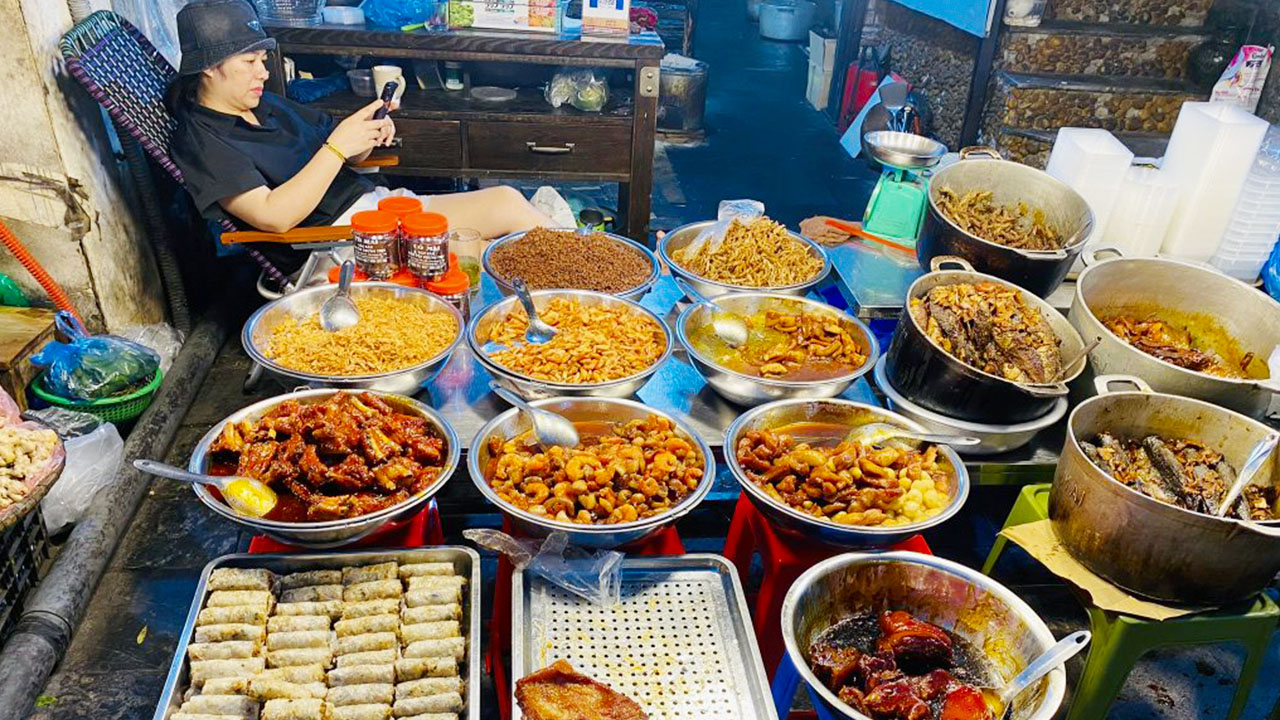
Traditional Desserts in Hanoi
As an integral part of Hanoi’s culinary mosaic, traditional desserts offer a sweet and refreshing finale to vibrant meals. These sweet treats derive their charm from simple, natural ingredients that harmonize into delightful flavors. Each dessert reflects both the ingenuity and the cultural tastes of Vietnam, serving as the perfect conclusion to a culinary exploration of Hanoi.
One of the cherished delights is Chè, a sweet pudding-like concoction that can vary extensively by region and personal taste. Made with a combination of beans, jellies, and fruits, chè is often enjoyed over a bed of crushed ice with a drizzle of coconut milk, delivering a sweet yet refreshing experience. Each spoonful is a celebration, a carnival of textures mixed with subtle sweetness.
Jelly cakes, known as Bánh Da Lợn, are another staple in Hanoi’s dessert repertoire. Made from layers of tapioca flour and mung bean paste, it marries the dense, chewy texture with a subtle sweetness, often colored with pandan leaf juice for an eye-catching green hue. It’s a portable treat that serves as a reminder of the simplistic beauty in Vietnamese desserts.
Similarly, Nước Cốt Dừa, or coconut milk desserts, are customary in Hanoi homes, embodying the tropical climate of Vietnam. Blending fruits like bananas with sticky rice and coconut cream, these desserts are warm and comforting, often enjoyed hot, showcasing an intriguing blend of flavors and aromas.
Then there’s Hoa Quả Dầm, a medley of tropical fruits served with a drizzle of yogurt or coconut milk. This sweet symphony of flavors and cool sensations provides a leisurely end to a meal or a refreshing snack on a hot day, capturing the vibrant spirit of Hanoi’s street food scene.
These traditional desserts encapsulate the heart of Hanoi’s food scene, combining local ingredients with culinary craftsmanship that reveals the cultural secrets of this dynamic city.
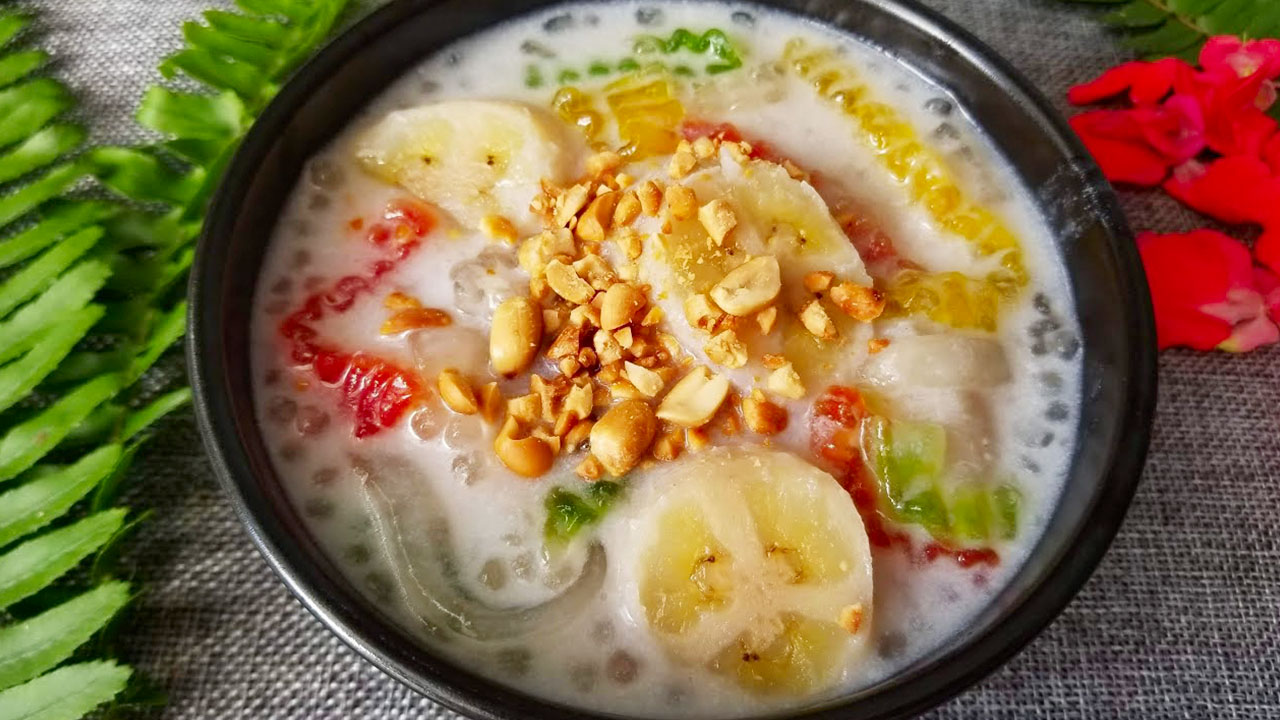
Influences on Hanoi Food Culture
Hanoi’s food culture is a reflection of its complex history and geographic setting, which have added layers of flavors, techniques, and traditions to the city’s culinary artistry. As a bustling capital with deep-rooted traditions and an openness to cultural exchange, the influences on Hanoi’s cuisine are both varied and profound.
From the gentle whispers of Chinese influences seen in techniques like steaming and the balanced play of yin and yang in flavors to the more assertive French colonial imprints such as the crispy baguette in Bánh Mì, Hanoi’s food is as diverse as its history. These must-try dishes mentioned earlier not only embody the city’s vibrant culinary identity but also serve as markers of the profound impact these historical influences have wielded.
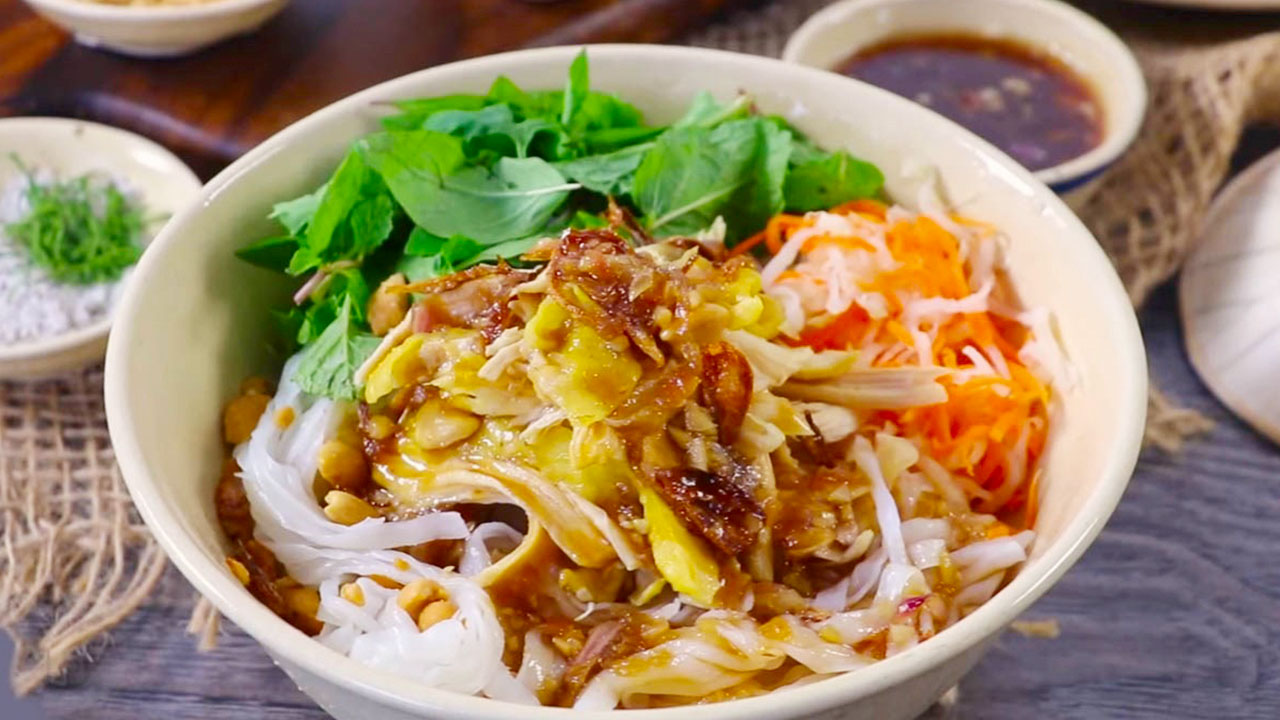
Vietnamese Culinary Heritage
The culinary heritage of Vietnam, especially in Hanoi, is a mosaic shaped by centuries of cultural amalgamation and regional diversity. Hanoi, as the epicenter of Vietnamese history, captures the confluence of indigenous culinary practices and foreign influences, each etching its chapter into the gastronomic fabric of the city. Vietnamese cuisine is widely recognized for its emphasis on balancing flavors, with dishes harmoniously blending ingredients like fish sauce, lime, and a generous array of fresh herbs.
At the heart of this heritage is the revered Phở, which serves as a national emblem of gastronomic balance. Deeply embedded in Hanoi’s culinary DNA, Phở’s savory broth represents the skillful infusion of aromatic spices and herbs, a practice perfected over generations. Echoing both the simplicity and complexity of Vietnamese cooking, this dish is emblematic of Hanoi’s ability to craft comfort food with finesse.
Another key part of this heritage is the broad spectrum of traditional dishes, from the elegance of Bún Thang to the more rustic Ca Phe Trung. These dishes offer insights into Hanoi’s storied past, captured in flavors that resonate with a cultural symphony of balance and harmony. Bún Thang, a noodle dish characterized by its clear broth and delicate accents of chopped herbs and egg strips, is a testament to the precision and attention to detail in Vietnamese cooking.
The historical trade routes through Vietnam introduced various exotic spices while maintaining core elements like lemongrass and star anise. These vibrant ingredients became hallmarks of Vietnamese taste, where nuanced profiles are celebrated through dishes that interplay sweetness, spiciness, sourness, and umami.
Through this culinary legacy, Hanoi continues to be a living testament to Vietnam’s storied past and innovative spirit a city where food not only nourishes but narrates the historical journey of a resilient people with flavors born of tradition and evolution.
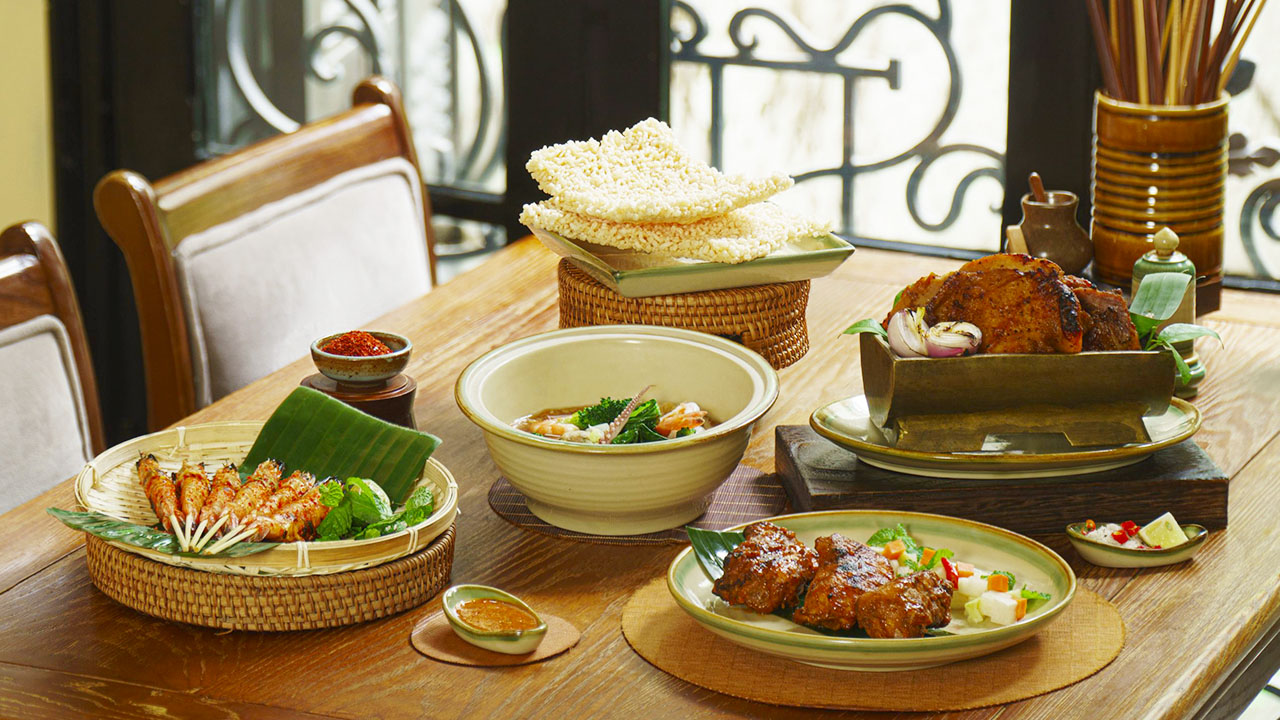
French Colonial Influence on Hanoi Cuisine
The French colonial era in Vietnam, lasting from the late 19th to mid-20th centuries, left an indelible mark on Hanoi’s culinary landscape. This period of colonization transformed local food culture by merging French culinary techniques with traditional Vietnamese practices, giving rise to a unique cuisine that Hanoi is famous for today.
One of the most celebrated culinary inheritances from the French is Bánh Mì, the Vietnamese baguette sandwich. The Vietnamese adapted the French baguette to suit local tastes, incorporating rice flour to make the bread lighter and crispier. Filled with local meats, pâté, pickled carrots, and greens, Bánh Mì exemplifies how French influence was seamlessly integrated into Vietnamese food culture, transforming a European staple into a beloved local delicacy.
Another iconic dish born out of this fusion is Bò Kho, a rich beef stew seasoned with the quintessential spices of both cuisines star anise from Vietnamese heritage and the slow-cooked beef technique from French stews. A meeting point of two worlds, this dish combines earthy Vietnamese flavors with the hearty richness of French cuisine.
The influence extends beyond individual dishes, making its way into daily life with coffee consumption. The French introduced coffee to Vietnam, and Hanoi has made it uniquely its own with the invention of Cà Phê Trứng (Egg Coffee). This creation, combining robust coffee with egg yolks, sugar, and condensed milk, exemplifies the innovative integration of French ingredients and preparation techniques with local customs.
The city’s architecture and culinary practices still echo the French presence, evident in the proliferation of cafes and boulangeries lining Hanoi’s streets. French wines and buttery pastries find their place alongside traditional Vietnamese meals, representing a culinary landscape that is at once foreign and inherently local.
These influences have given rise to a complex, rich gastronomic identity in Hanoi, reflecting how cultures can blend to create new, vibrant culinary traditions that celebrate both the past and the present.
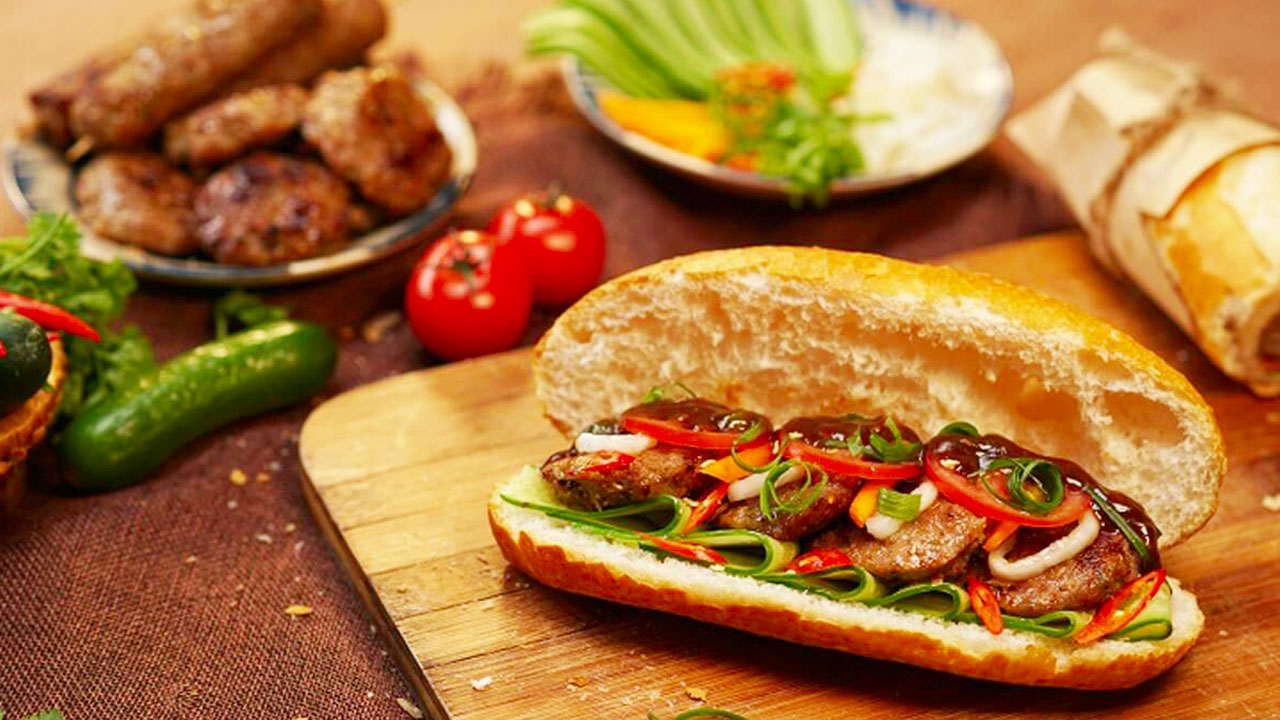
Regional Variations within Hanoi’s Food Scene
Hanoi, as a melting pot of cultural and culinary traditions, offers a remarkable variety of regional dishes and flavors that showcase the city’s dynamic food scene. Each district within Hanoi holds its own culinary specialty, shaped by local ingredients, climate, and age-old techniques that have been passed down through generations.
For instance, in the vibrant Old Quarter, the atmosphere is steeped in history and bustling with the aroma of street food. Here, you can experience Chả Cá, a grilled fish dish marinated with turmeric and dill a specialty that captures the essence of northern Vietnamese cuisine. The balance of fresh greens and savoury textures reflects how Hanoi’s food culture has adapted to incorporate regional produce like dill, which is otherwise uncommon in Vietnamese cooking.
Moving towards more residential quarters, Bún Riêu, a tangy crab noodle soup, reflects rural tastes influenced by bountiful river resources. The tomatoes, crabs, and often snails in bún riêu cater to the palate of local food enthusiasts, who appreciate its rustic simplicity and vibrant flavors.
Southern influences have also seeped into Hanoi’s food scene, evident in dishes like Bún Thịt Nướng grilled pork with cold vermicelli noodles, which combines the sweetness of southern cuisine with the more structured flavors of the north. This dish highlights Hanoi’s ability to embrace and reinterpret regional differences within Vietnam’s culinary framework.
Furthermore, seasonal variations play a vital role in shaping Hanoi’s food offerings. The city’s sultry summers bring lighter and cooler dishes, while during the brisk winter months, people may seek out the warmth of Lẩu (hotpot) gatherings. These variations not only demonstrate the culinary adaptability of Hanoi but also how food reflects the rhythm of life within the city.
By celebrating regional variations, Hanoi’s food culture invites locals and visitors to explore a diverse world of flavors where authentic culinary experiences await in every corner, reflecting the city’s rich past and vibrant present.

Dining Experiences in Hanoi
Hanoi’s dining scene is a fascinating collage of traditional reverence and modern innovation, offering unique experiences that cater to both nostalgic tastes and adventurous palates. The city’s culinary culture is enhanced by its intricate historical influences, regional diversity, and a commitment to authenticity and quality. These diverse influences shape the dining environment in Hanoi, creating a landscape that is as culturally significant as it is gastronomically impressive. Whether enjoying a meal at a bustling street food market or a fine dining establishment that crafts dishes from local ingredients, the dining experiences in Hanoi embody an evolving tradition that mirrors the vibrant, eclectic heart of the capital.
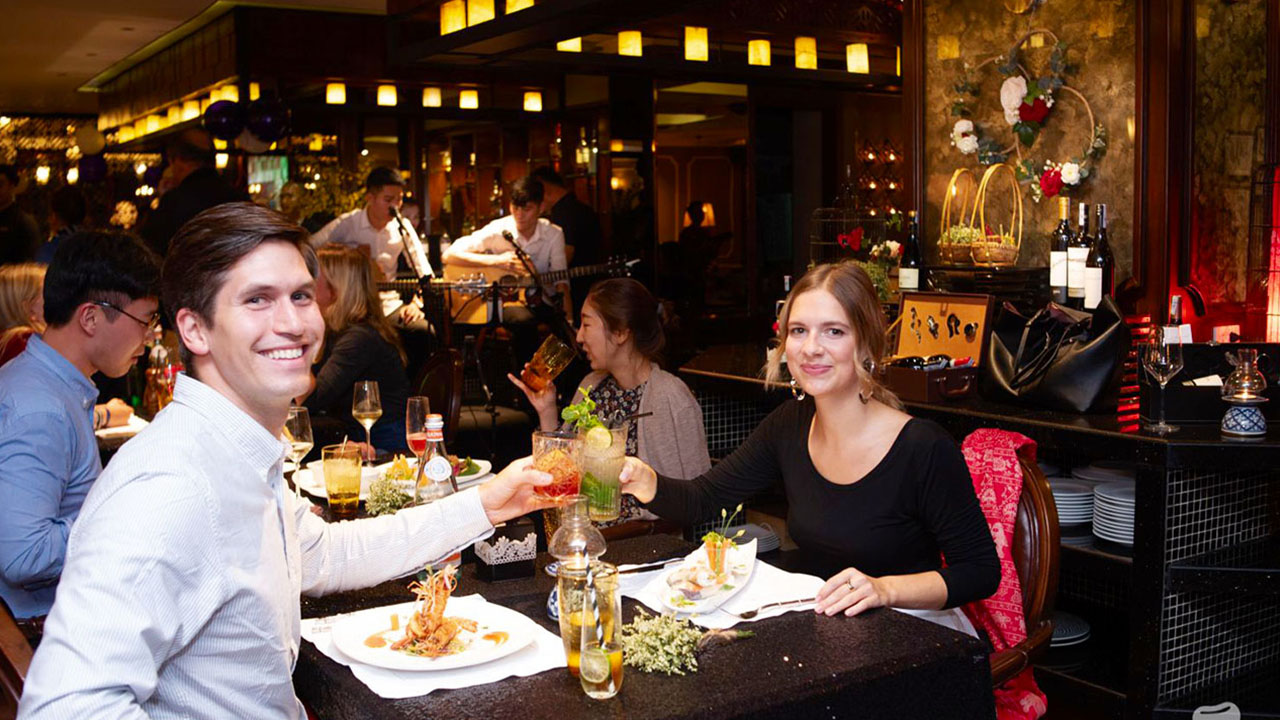
Street Food Markets and Food Stalls
Street food markets in Hanoi are the lifeblood of the city’s culinary scene, bustling with energy, tradition, and the aromas of freshly prepared meals. These markets are more than just a place to eat; they are social hubs where both locals and visitors can experience the authentic spirit of Hanoi through its food. Iconic markets like Dong Xuan Market and Long Bien Market offer a vivid snapshot of Vietnamese daily life, providing a platform for culinary creativity to flourish in vibrant colors and bold flavors.
At these markets, stalls overflow with a diverse array of flavors. From the fragrant Cốm (young green rice) packs to the piping hot bowls of Bánh Cuốn (steamed rice rolls), the harmony of ingredients and finesse of preparation tell stories of cultural continuity and creativity. Cốm symbolizes the harvest spirit and offers a taste uniquely tied to autumn in Hanoi sweet, nutty, and subtle in texture.
Meanwhile, the sizzling of Bột Chiên (fried rice cakes) resonates across the aisles, enticing patrons with its familiar scent and golden hues. Each piece, crispy on the outside yet soft within, serves as an ode to the traditional cooking methods that have been adored by families for generations.
Ordering Bún Ốc (snail noodles), where freshly-caught snails bring earthy flavors to light, reveals yet another layer of the rich culinary landscape. The careful selection of fresh produce, herbs, and spices plays a critical role in defining these flavors, bound together by a craftsmanship rooted in Hanoi’s heritage.
To truly appreciate these food stalls is to engage with the vibrant mosaic of Hanoi’s socio-cultural fabric a place where whispered family recipes transform ordinary ingredients into extraordinary flavors. Whether you’re engrossed in the busy crackle of sizzling pans or leisurely sipping herbal teas while absorbing the market’s lively buzz, the street food experience embodies a cultural exchange that enriches any gastronomic journey.

Restaurants Offering Authentic Hanoi Cuisine
For those seeking a sit-down culinary experience, Hanoi’s array of authentic restaurants offers a refined taste of the city’s rich food culture. These establishments are more than just places to dine they are a window into Hanoi’s diverse culinary soul, where tradition meets innovation in an inviting atmosphere. Esteemed locations like *Gia Trình, *and Home Vietnam create a dining experience that is as much about the ambiance and cultural immersion as it is about taste and presentation.
Renowned for its high-quality ingredients and meticulous preparation, Gia Trình is often sought for its sophisticated take on traditional dishes. Its seasonal menu celebrates both the bounty of local produce and the subtleties of Vietnamese spices artfully balanced in exquisite creations like Ca Trai Cay a harmonious blend of fresh seafood and fruits with the zestiness of lime and chilies.
Home Vietnam, a favorite among locals and tourists alike, prides itself on bringing authentic flavors to life in a homely setting. Here, dishes like Thịt lợn Nướng Lá Lốt grilled pork wrapped in betel leaf are served with finesse, offering a fusion of aromatic herbs and chargrilled notes that burst with every bite, expertly showcasing the complexity of Vietnamese cooking.
Venturing to Quan An Ngon, visitors are treated to a culinary showcase where traditional street food is highlighted in a restaurant setting. The ambiance serves to heighten the authenticity of dishes like Bánh Khọt (Mini Rice Pancakes), served crispy with an array of fresh vegetables, providing a fresh spin on Vietnamese comfort food.
These restaurants reflect the evolving narrative of Hanoi’s food culture, emphasizing authenticity while pushing the boundaries of culinary tradition and creativity. Patronizing these establishments offers a more intimate, educational experience, inviting diners to connect deeply with the food, the people who make it, and the stories behind each dish.
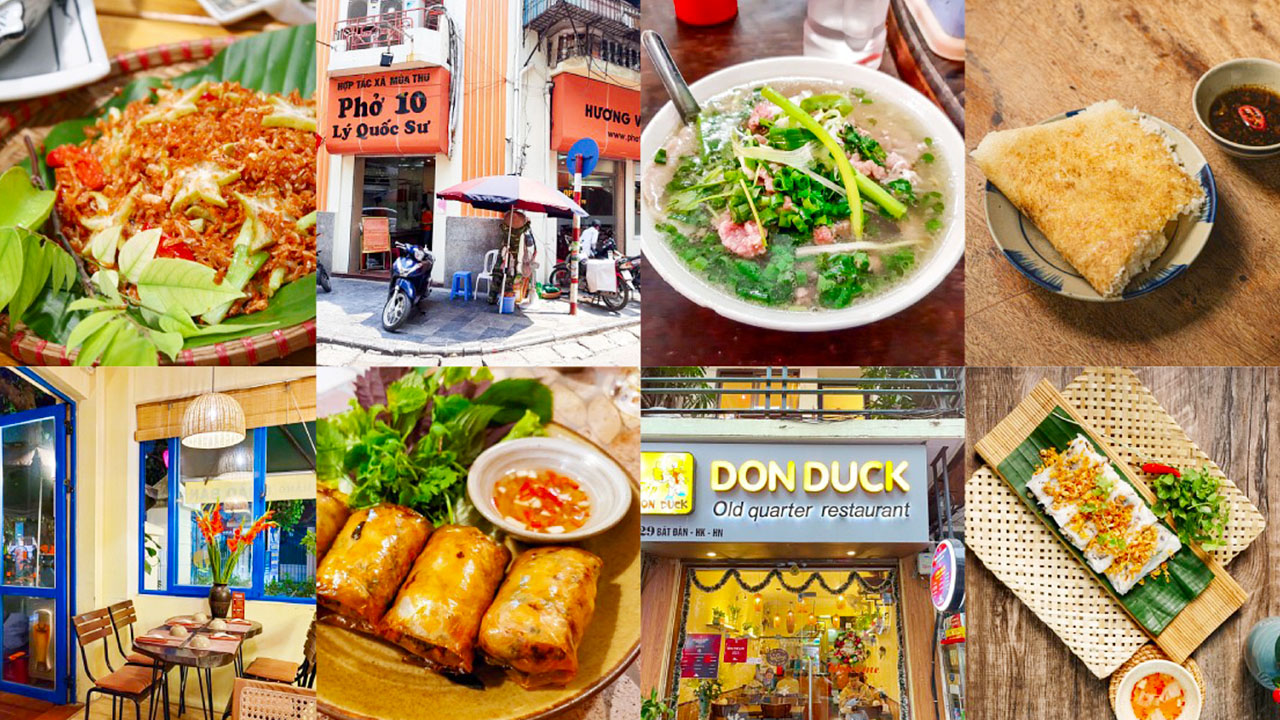
Unique Dining Themes in Hanoi
Dining in Hanoi can also transport guests to a thematic wonderland where unique experiences are crafted. Beyond traditional experiences, the city boasts a thriving segment of uniquely themed eateries that promise to tantalize taste buds and ignite imaginations. Themed restaurants in Hanoi offer a novel approach to Vietnamese dining, allowing for an exploration of not just food but also culture, art, and storytelling.
The Note Coffee, situated amid the hustle of the Old Quarter, stands out with its philosophical theme. Each surface is adorned with colorful post-it notes showcasing expressions of joy, love, and reflection. With a comforting cup of Cà Phê Trứng in hand, diners can explore confessions and inspirations left by visitors worldwide, merging the warmth of hospitality with daily affirmations and caffeine.
In a nod to the artistic, Maison de Tet Decor brings together beautiful design and fresh flavors along the banks of Hanoi’s West Lake. This venue combines the elegance of French colonial architecture with a gallery-like ambience, where patrons can bask in the simplicity of farm-to-table dishes prepared with local ingredients while indulging in a delightful visual experience.
For adventurers, Hidden Gem Coffee invites exploration past themed decor into the world of sustainability. Crafted largely from recycled materials, this café epitomizes the transformative power of creativity and offers a green twist to traditional favorites like Bánh Xèo sizzling pancakes, cooked up amidst repurposed furniture, showcasing taste and eco-consciousness in unison.
These thematic experiences enrich Hanoi’s dining landscape, inviting patrons to engage their senses and discover more than just flavors, but narratives woven into the culinary tapestry. They present an opportunity to see familiar dishes through fresh lenses, inviting a bold shift from the ordinary to the extraordinary.
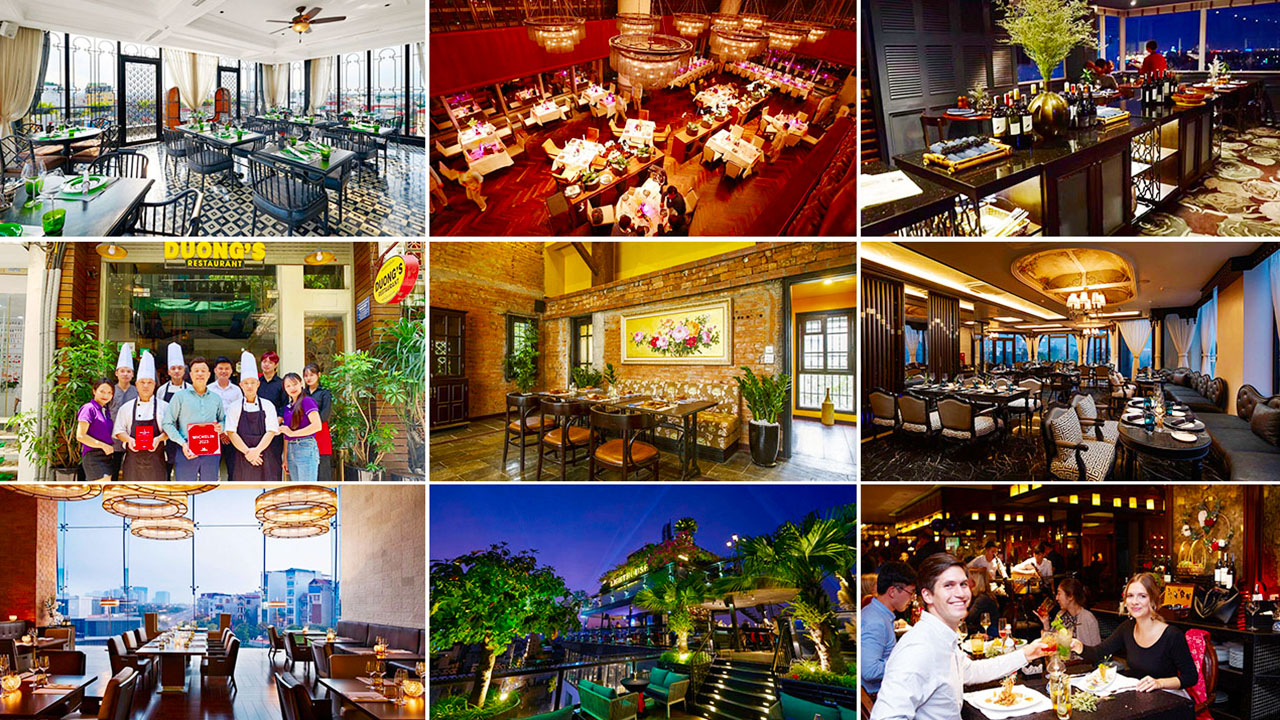
Beverage Culture in Hanoi
A vibrant part of Hanoi’s culinary identity is its diverse beverage culture, which elevates dining experiences through its intricate blends of tradition and modernity. From the elegant ceremonies surrounding traditional tea to the bustling social scenes at coffee shops, and even the lively corners of beer halls, Hanoi offers a dynamic and refreshing exploration of drinks infused with the essence of its cultural and historical past. This spectrum of beverages not only complements the rich flavors found in Hanoi’s cuisine but also stands alone as an integral part of the city’s gastronomy. Sharing a drink in Hanoi highlights the cultural bonding and social interactions that characterize Vietnamese hospitality, enriching any visit with authentic local experiences steeped in history and innovation.

Traditional Vietnamese Beverages
Hanoi, replete with history and charm, presents a beverage culture rich with traditional drinks that reflect the city’s ancestral roots and cultural ethos. These beverages go beyond mere refreshment, offering a unique window into Hanoi’s past as well as its people’s creative use of local ingredients.
Tea holds a distinguished place, with Lotus Tea enjoying particular reverence. Steeped in the delicate fragrance of lotus, this tea is a ceremonial drink served during important gatherings and cultural rituals. Its preparation is a meticulous process involving the infusion of tea leaves with freshly bloomed lotus petals, creating a brew as fragrant as it is subtle, encapsulating the elegance and precision of Vietnamese tea culture.
A staple across Hanoi, Nước Mía or sugarcane juice, is a quintessential thirst-quencher. Extracted freshly from stalks via street-side vendors, this drink offers sweet relief during the more oppressive summer months. An endearing symbol of Hanoi’s street food scene, it’s cherished by both young and old.
Rich and comforting, Sâm Bí Đao melon and winter melon tea is another celebrated traditional beverage. Its blend of perennial herbs, dried fruits, and amber colors is best known for cooling properties and is often enjoyed for its supposed health benefits believed to aid digestion and restore balance to the body’s thermal energies.
Capping off these flavors, Sinh Tố, or Vietnamese smoothies, introduce the bounty of tropical fruits like mangoes, avocados, and dragon fruits into creamy concoctions. These refreshingly sweetened drinks appeal to both locals and tourists, providing natural sweetness devoid of any additives an ode to Vietnam’s rich agricultural heritage.
These traditional beverages transport anyone partaking them back into a Hanoi of yesteryear, highlighting the city’s culinary commitment to preserving both the art of beverage preparation and the commemorative pace of Vietnamese life.
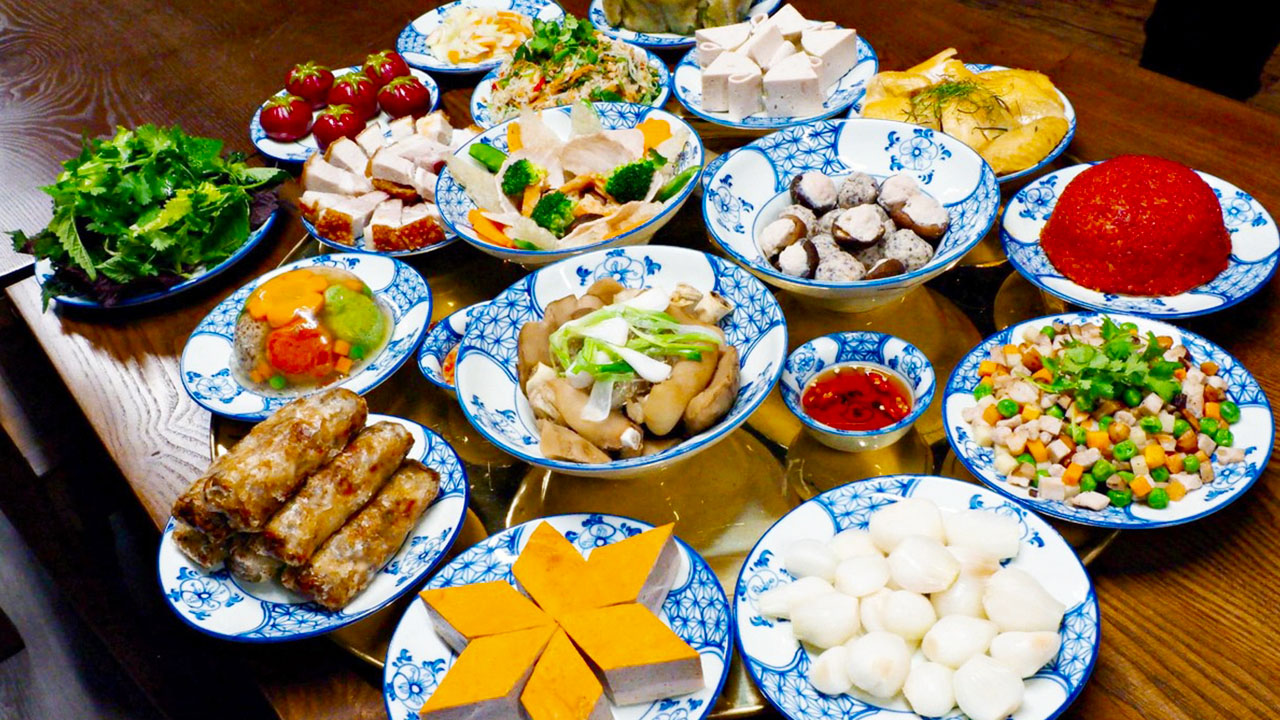
The Rise of Coffee Culture in Hanoi
Hanoi’s coffee culture has blossomed into a tapestry of aromas and flavors, representing a significant aspect of the city’s modern cultural history. From “café” being merely a place to obtain a morning energy boost, it has grown into a social space embodying cultural renewal and harmonious exchange of ideas among Hanoians of all generations.
Cà Phê Phin, brewed slowly using a drip filter, is the heart of Vietnamese coffee traditions. This method results in a robust and intense brew which could be savored black or merged with sweetened condensed milk to produce Cà Phê Sữa Đá. The sweet balance derived from the milk cuts through the strong coffee, creating an enchanting taste landscape that punctuates Hanoi’s daytime bustle. It’s not uncommon for many to congregate, sharing stories over this humble beverage.
Taking coffee enjoyment further, the iconic Egg Coffee has emerged as a symbol of ingenuity a creamy concoction blending egg yolks, sugar, condensed milk, and robusta coffee, resulting in a uniquely sweet and frothy sensation. Born out of adversity during the milk shortages of the 1940s, it represents the innovation of Hanoi’s coffee culture, translating hardship into opportunity.
Hanoi’s cafe landscape is a rich arena boasting snug venues like The Note Coffee and artistic hotspots such as Cong Caphe, where the spirit of retro meets creative decor, retaining a stylized charm. These cafes, decorated with vintage memorabilia, provide a tranquil escape from the city clamor, inviting both locals and tourists to partake in the timeless ritual of coffee and conversation.
The rise of coffee culture in Hanoi does not merely echo a surge in coffee consumption it celebrates a legacy, cementing its place in daily tradition and ensuring every sip taken resonates with the city’s enduring legacy.

Local Beer and Alcoholic Beverages
Hanoi’s local beer and alcoholic beverages showcase a lively, social dimension of the city’s beverage culture, a lively backdrop to Hanoi’s bustling streets and vibrant nightlife. Iconic in its simplicity and communal nature, Bia Hơi Hanoi’s refreshing draft beer continues to quench the thirst of locals and visitors alike, served throughout countless street-side establishments and pop-up stalls.
Bia Hơi is renowned for its low alcohol content and affordability, epitomizing casual drinking culture in Hanoi. With glasses often priced between VND7,000 to VND10,000 (less than 50 cents USD), it invites convivial gatherings where sharing stories amid the ambient sounds of the city becomes an integral part of the experience.
The social scene further deepens with Rượu Nếp, a traditional rice spirit enjoyed during festivities and rituals, reflecting the deep-rooted drinking traditions that honor familial and community bonds. This potent yet naturally sweetened rice-based spirit, prepared with a combination of sticky rice, yeast, and traditional fermentation techniques, emphasizes cultural preservation, steeped in the ceremonial fabric of Vietnamese life.
Enthusiasts seeking a concoction with modern twist find solace in establishments experimenting with cocktails that pay homage to traditional flavors. Lotus Martini, for instance, incorporates lotus flower essence into a concoction showcasing Vietnam’s natural sweet florals, offering an inviting fusion of elegance and creativity.
These beverages represent the melting pot of social interaction and cultural exchange in Hanoi. Sharing drinks in Hanoi is synonymous with forging relationships and weaving the fabric of community spirit that defines the soul of the city a city where the clash of old and the embrace of new create a vibrant tapestry for all who visit.
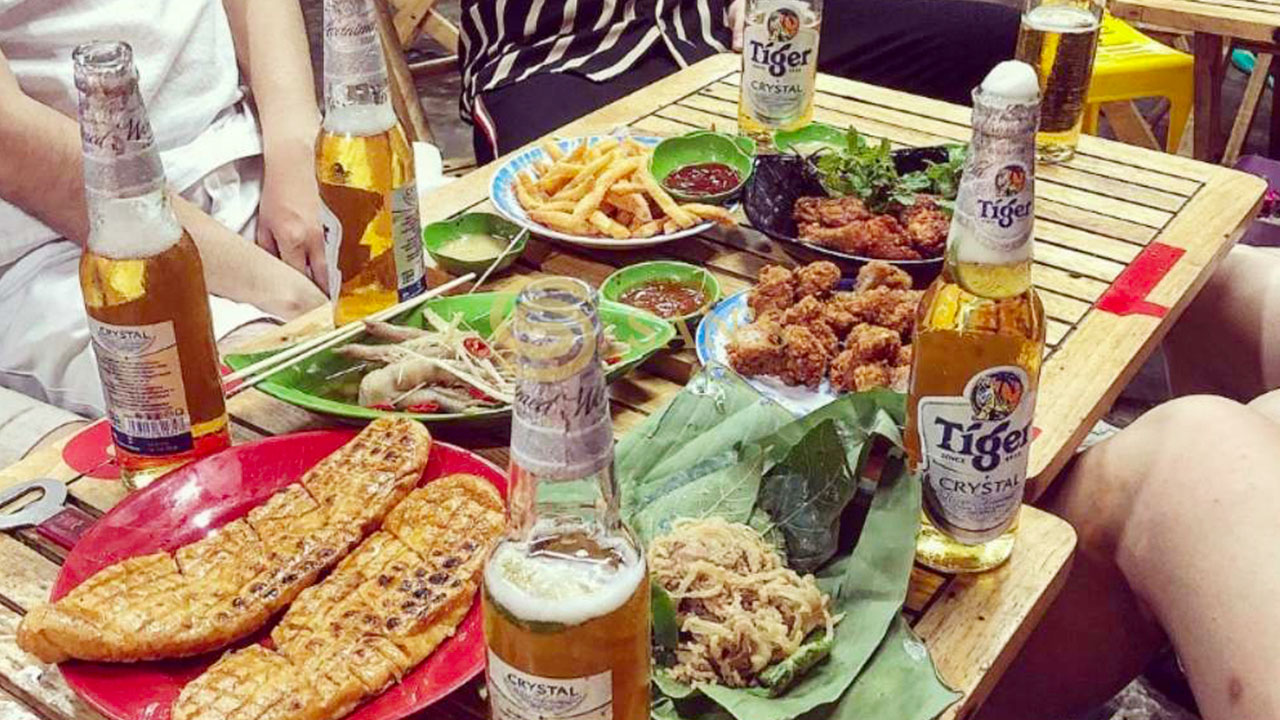
Eating Etiquette and Dining Customs
Eating and dining customs in Hanoi extend beyond the consumption of food; they represent an intrinsic part of Vietnamese culture that values respect, harmony, and social interaction. Meals in Hanoi are an elaborate dance of etiquette and tradition, instilling a sense of community and continuity across generations. The city’s beverage culture, as highlighted earlier, adds another layer to these customs, emphasizing shared experiences around meals. Understanding this etiquette enhances one’s culinary journey through Hanoi, offering deeper cultural insight and connection. Each meal invites guests to engage with longstanding traditions, where the role of food and drink is as much about nourishing the soul and creating bonds as it is about satisfying hunger.
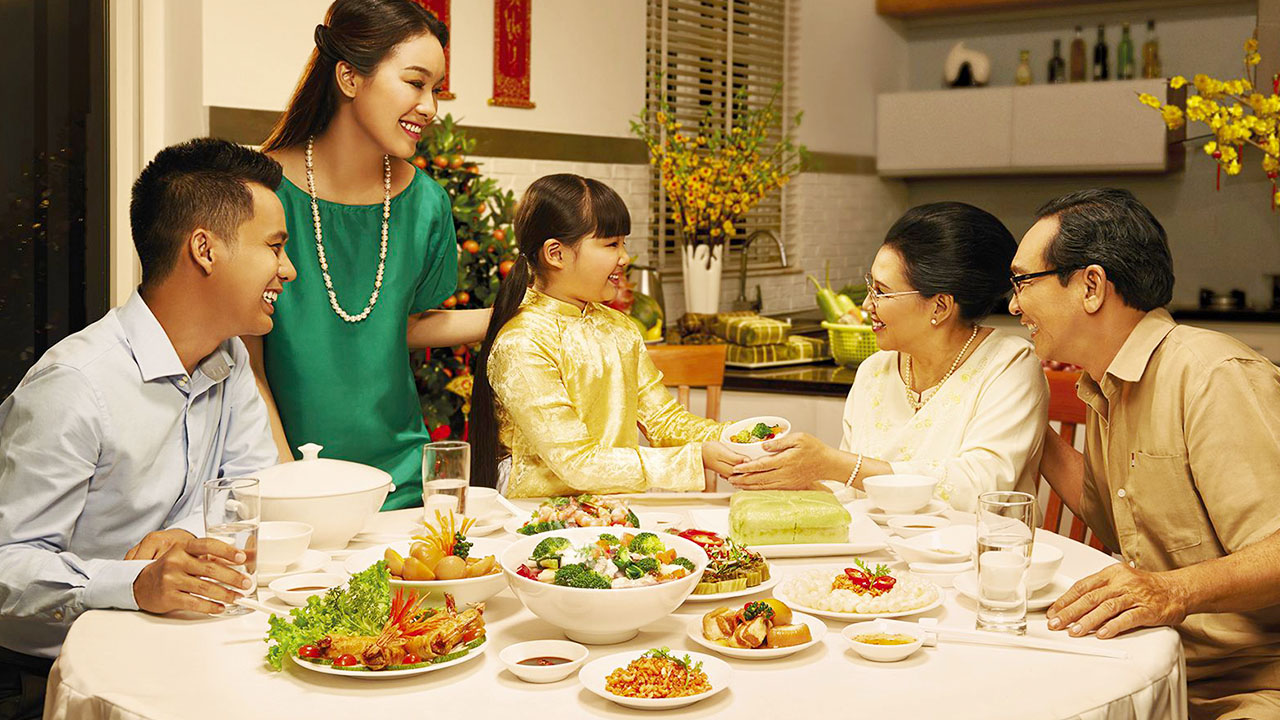
Common Dining Practices in Hanoi
Dining in Hanoi is a cultural experience laden with practices and customs that reflect the city’s historical and social dynamics. From the appropriate use of chopsticks to communal table settings, these practices invite newcomers into a world where manners and social interactions are a crucial aspect of enjoying meals.
Chopstick etiquette forms a core part of Vietnamese dining customs, with correct handling considered essential. Chopsticks should never be placed upright in rice, as this is reminiscent of incense sticks used in rituals for the dead. Instead, they should be rested neatly on chopstick holders or the bowl rim, maintaining respect and decorum at the dining table.
Sharing meals in Hanoi involves a communal approach where multiple dishes are placed at the center for everyone to share. This style emphasizes the importance of unity and harmony, inviting everyone to partake equally and ensuring no one goes without. Serving others before oneself is an expression of care and gratitude a gesture that cultivates humility and warmth within the group.
Observing Eldest Person First is another significant custom; the eldest begins the meal as a mark of respect and tradition, reaffirming hierarchical structures that underpin Vietnamese family values. It’s also common to politely refuse food the first few times it is offered, showcasing modesty and deference.
Dining in Hanoi also includes minding one’s table manners avoiding loud conversations, not making a mess with food, and not blowing one’s nose at the table all reflect the intrinsic elegance in Vietnamese dining practices.
Understanding and embracing these customs equips visitors with the cultural thread needed to appreciate the intricacies woven into every meal, allowing for an enriched journey through the artful dining traditions of Hanoi.
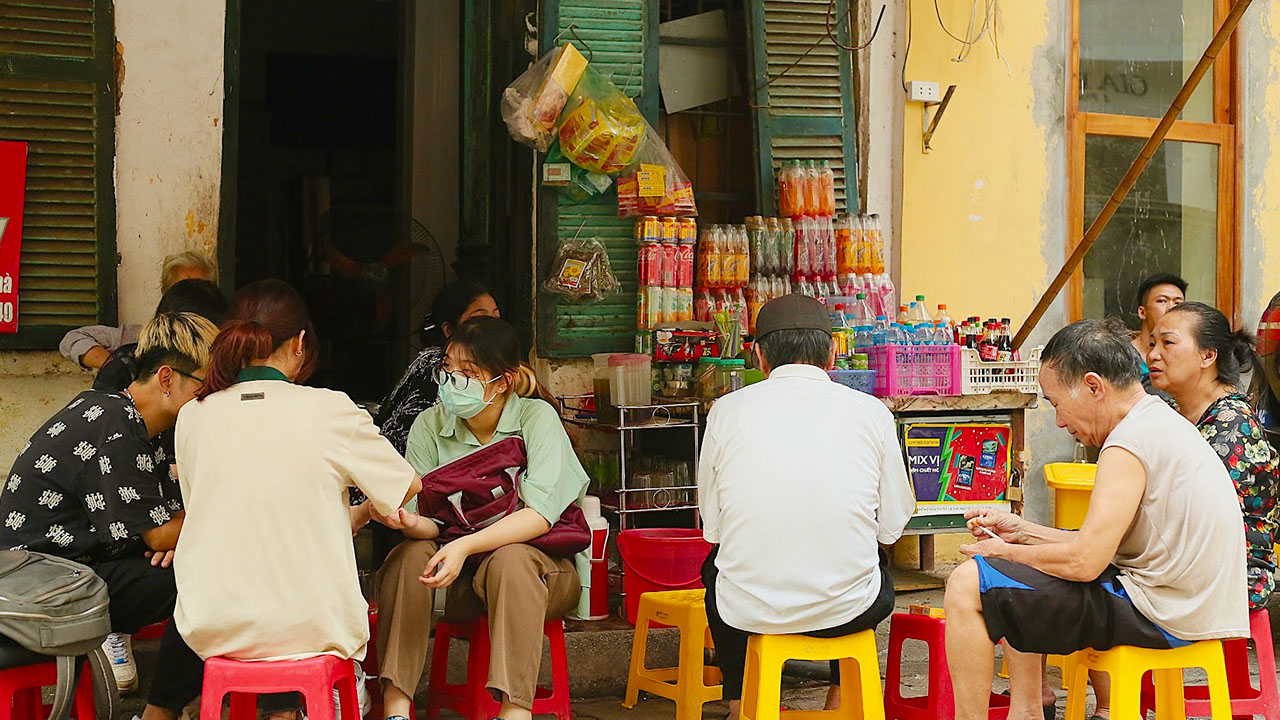
Importance of Sharing Meals in Vietnamese Culture
In Vietnamese culture, sharing meals is far more than a culinary practice; it is a foundational element of social cohesion and community identity. This tradition, deeply embedded in Vietnamese life, underscores the significance of food as a medium for strengthening familial ties and friendships.
The communal nature of Vietnamese meals is apparent in the family-style presentation, where dishes are placed at the center of the table for everyone to partake equally. This approach not only fosters a sense of togetherness but also encourages the sharing of joy, stories, and experiences a vital practice that brings warmth and connection to everyday life.
In typical Vietnamese households, mealtime is a sacred event one that gathers the family together, often extending to include neighbors and friends in shared celebration. Offering food to others before serving oneself is a manifestation of politeness and thoughtfulness, reflecting the collectivist ethos of Vietnamese society.
Additionally, diners are expected to help themselves respectfully, using serving utensils and ensuring everyone has equal access to the variety of flavors present at the table. This practice emphasizes mutual respect and underscores the importance of considering others’ needs over personal ones.
In a broader cultural context, feasts and communal meals play a significant role in events such as weddings, Tet (Vietnamese Lunar New Year), and other festivals. Here, sharing meals becomes ceremonial a reflection of gratitude and abundance, a time to honor ancestors, and an affirmation of unity among community members.
Sharing meals in Hanoi and across Vietnam is not simply about food; it represents shared living a connection of hearts and histories that transcends generations, capturing the essence of Vietnamese hospitality and community spirit.

Tipping Practices in Hanoi Restaurants
Navigating tipping customs in Hanoi’s restaurants can be a delicate task, as it bridges both local tradition and the evolving hospitality industry influenced by global practices. Traditionally, tipping has not been a customary requirement in Vietnam. However, recent years have seen a gradual shift towards recognizing tips as a token of appreciation, particularly within tourist-centric establishments.
In Hanoi, tipping is usually welcome but not obligatory. In many restaurants, especially those with an international focus or located in upscale districts, a service charge may be included in the bill typically ranging from 5% to 10%. In such cases, additional tipping is not necessary, although it remains appreciated for exceptional service.
For smaller, local eateries or when eating street food, tipping is less common. Instead, rounding up to the nearest bill or choosing to leave loose change is a practical approach, offering a small gesture towards the vendor without cultural misstep.
In broader service-related contexts like taxis or spa treatments, small tips are welcomed but not expected. A simple “Cảm ơn”, meaning “thank you,” can hold significant value, reflecting gratitude and politeness that align with Vietnamese social norms.
Understanding these practices ensures a respectful navigation of Hanoi’s dining scene, allowing visitors to express their appreciation in a manner that harmonizes with local traditions while acknowledging the warm hospitality that hosts extend. By embracing these subtle nuances, you’ll find your interactions enriched with authenticity and graceful ease.

Exploring Hanoi’s Food Scene
Exploring Hanoi’s vibrant food scene is akin to embarking on a sensory adventure that encapsulates the city’s rich cultural identity and culinary prowess. From the bustling streets to the elegant bistros, each corner of Hanoi is infused with flavors and traditions that invite discovery. While eating etiquette and dining customs shape the social framework of this exploration, the food itself opens a window into the spirit of tradition and innovation that defines Hanoi. This journey goes beyond sampling the city’s famed dishes; it engages with local practices and experiences that narrate Hanoi’s history and modernity through gastronomy. As we delve deeper into culinary tours, festivals, and online resources, we uncover the full spectrum of Hanoi’s gastronomic landscape.

Food Tours and Culinary Experiences
For those seeking to engage more deeply with Hanoi’s rich culinary landscape, embarking on a food tour offers an enriched perspective, turning the city into a living classroom of cultural history and gastronomic delights. These tours promise not just memorable meals, but also stories of heritage and craft passed from generation to generation.
A standout among food tours is the Hidden Hanoi Culinary Walking Tour, which invites participants to weave through bustling markets and hidden alleyways, rich with the aromas and flavors of street delights. This tour introduces guests to specialties like Bánh Cuốn or Mì Quảng, coupled with historical insights into their origins, painting a vivid picture of Hanoi’s culinary evolution.
Equally enticing is the Family Kitchen Experience, where visitors join a local family to prepare traditional meals such as Bún Chả or seasonal hotpots. This intimate experience extends beyond the kitchen, offering a window into cultural practices, meal customs, and shared stories that bring authentic hospitality to life.
For a more personal exploration, the Viet Flavors Tour allows food enthusiasts to curate a personalized journey, highlighting cafes, food trucks, and exclusive tastings tailored to satisfy particular curiosities and dietary delights. Offering both historical contexts and modern twist, guests discover the best of Hanoi at their pace.
Such culinary experiences teach more than just taste profiles they immerse travelers in the local rhythm, highlighting the interplay between food, culture, and history. Indulging in these tours promotes a greater understanding of Hanoi’s diverse food scene, animating the city’s past and present in delicious, vibrant harmony.
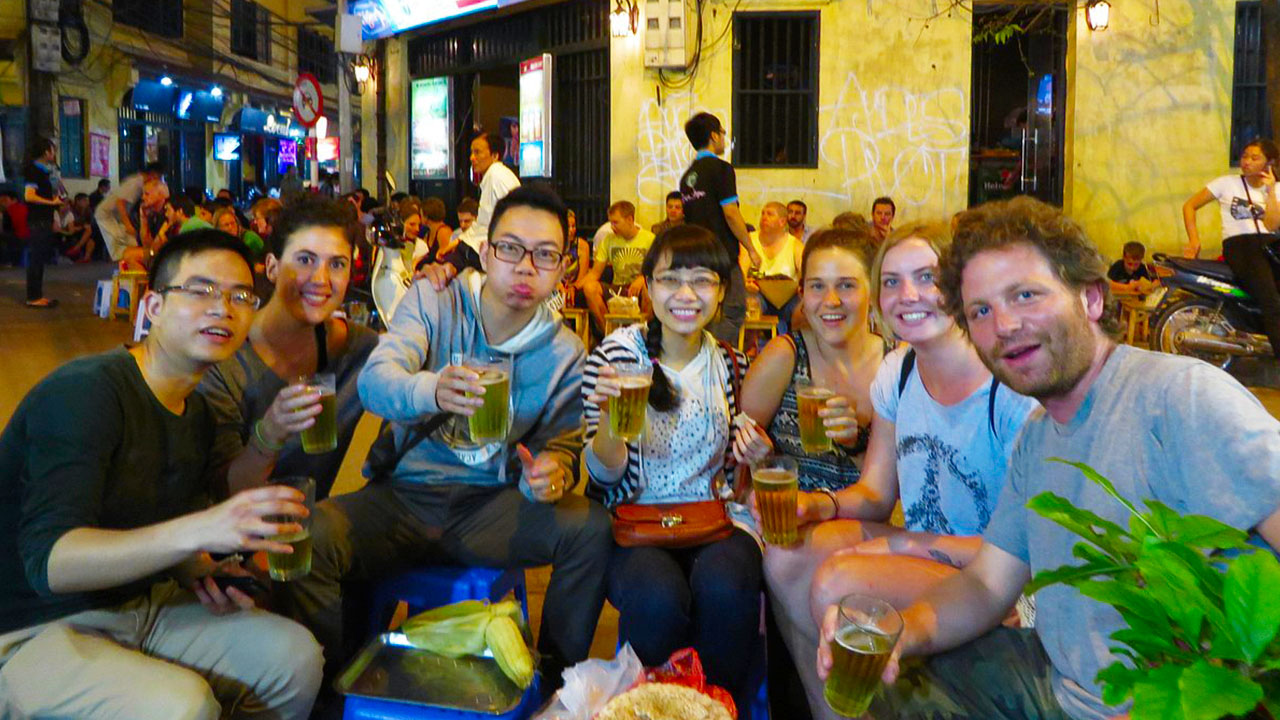
Festivals Celebrating Hanoi Cuisine
Hanoi’s vibrant festival scene enriches the culinary calendar, celebrating the diversity and creativity of the city’s food culture in jubilant displays of taste and tradition. These festivals offer a splendid opportunity to not only savor Hanoi’s culinary offerings but to engage with the city’s vibrant community spirit and cultural heritage.
Prominent among these is the Hanoi Culture and Food Festival, held annually at Thong Nhat Park. This festival champions regional specialties alongside international creations, promoting culinary exchange while celebrating Hanoi’s rich gastronomic roots. Attendees have the chance to participate in food demonstrations, culinary challenges, and workshops led by celebrated chefs who illuminate the artistry behind famed Vietnamese dishes.
The Hanoi Culinary Culture Exchange, another significant event, focuses on elevating Vietnamese cuisine on an international stage. With the city’s pedestrian zones filled with stalls offering street food and traditional flavors, this festival bridges Hanoi’s culinary customs with global tastes, offering cross-cultural encounters through food.
Smaller, quirky celebrations also dot the calendar, such as Bánh Mì Day, dedicated to the iconic Vietnamese sandwich. Vendors across Hanoi showcase unique versions while cultural activities highlight the historical narrative behind this dish, underscoring the confluence of local creativity and foreign influence.
These events collectively enrich the city’s cultural fabric, promoting culinary tourism and encouraging both locals and visitors to celebrate the universality and uniqueness of food. Embracing these festivals allows participants to engage not just with flavors and ingredients, but with a community’s enduring spirit, cementing Hanoi’s stature as a gastronomic beacon.
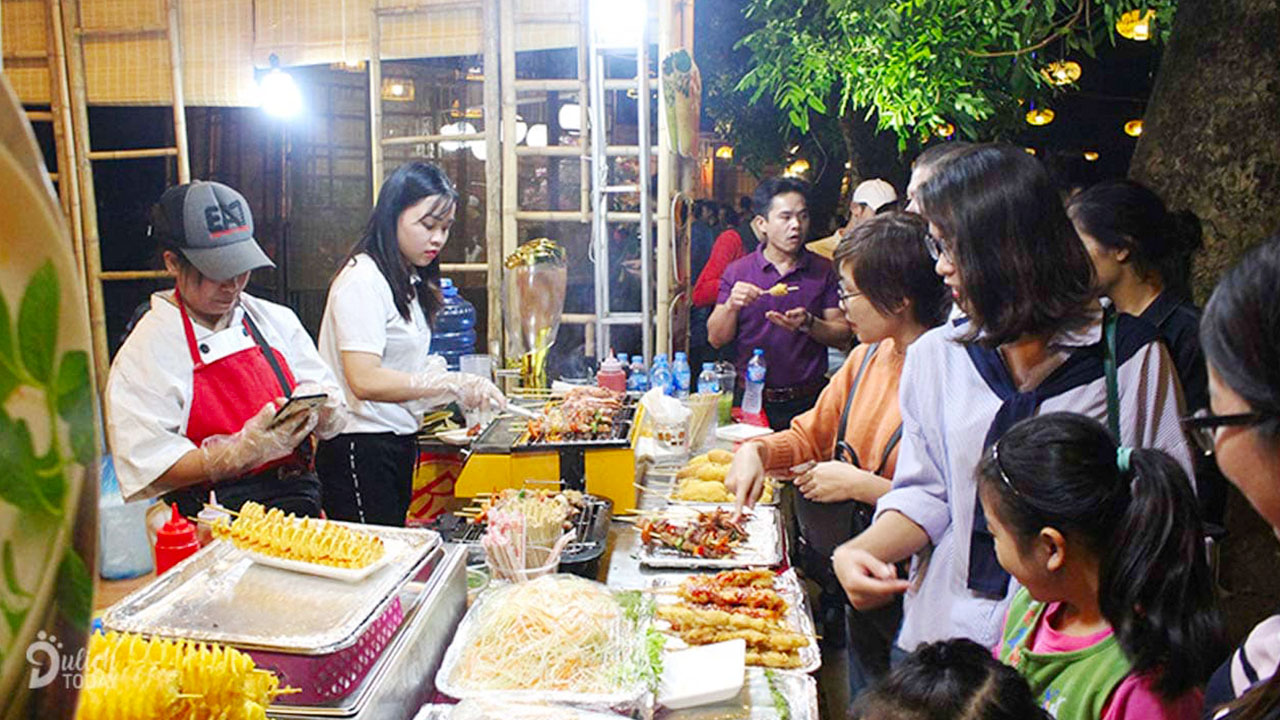
Online Resources for Hanoi Food Lovers
In the digital age, exploring Hanoi’s food scene is made easier with a myriad of online resources dedicated to guiding both locals and visitors through the city’s culinary labyrinth. These platforms offer valuable insights into Hanoi’s vibrant food culture, helping enthusiasts uncover hidden gems and celebrated eateries alike.
Websites like Foody.vn and Tripadvisor serve as portals where users can access reviews, recommendations, and up-to-date information about the best dining spots in Hanoi. Foody.vn offers a user-generated directory detailing everything from cozy cafes to local food stalls, empowering users to make informed decisions based on feedback from fellow food lovers.
Blogs such as Street Food Hanoi expand on personal culinary journeys through essays, photos, and interactive maps, showcasing the hidden facets of Hanoi’s food culture. These personal accounts offer an intimate look at the diverse flavors and traditions that make Hanoi’s streets a culinary delight.
For those seeking dedicated content on local breakfast spots or traditional food markets, the platform Vietnamese Food Lovers curates lists and interactive guides tailored for culinary explorers, highlighting everything from dynamic street food tours to recipes for self-directed home cooking adventures.
Social media channels and specialty groups on Facebook and Instagram have evolved into bustling communities where aficionados share experiences, discover new eateries, and connect over a shared love for Vietnamese cuisine.
These digital resources enrich the exploration of Hanoi’s culinary scene, ensuring an array of cultural and gastronomic treasures are just a click away. For both first-time visitors and local epicureans, these platforms are indispensable guides to fueling curiosity, adventure, and the discovery of Hanoi’s inviting flavors.
Frequently Asked Questions (FAQs):
- What are the must-try dishes when visiting Hanoi?
- Must-try dishes include Phở, Bún Chả, Chả Cá Lã Vọng, and Egg Coffee for a taste of Hanoi’s culinary diversity.
- How has French colonialism influenced Hanoi’s cuisine?
- French colonialism introduced new ingredients and cooking techniques, leading to dishes like Bánh Mì and rich stews such as Bò Kho.
- Where can I experience authentic Vietnamese coffee in Hanoi?
- Iconic cafes like The Note Coffee or Cong Caphe offer traditional Vietnamese coffee, including Egg Coffee.
- What festivals celebrate the culinary culture of Hanoi?
- The Hanoi Culture and Food Festival and The Hanoi Culinary Culture Exchange are key events celebrating the city’s food culture annually.
- Is tipping customary in Hanoi restaurants?
- Tipping is not obligatory but appreciated. In higher-end places, a 5%-10% service charge might be included, yet gratuities for exceptional service are welcome.
Key Takeaways:
- Hanoi’s food culture is a rich blend of tradition and modern influence, showcasing iconic dishes like Phở and Bún Chả.
- French colonialism significantly shaped food practices, introducing flavors that fuse with Vietnamese traditions.
- Street food markets are integral to Hanoi’s culinary identity, offering vibrant, communal dining experiences.
- Beverage culture is essential, with coffee playing a key role in social and daily life.
- Online resources provide extensive insights and guides for discovering Hanoi’s diverse food scene.
Conclusion:
Hanoi’s food culture is a captivating fusion of history, tradition, and innovation. From the aromatic charm of street side Phở stalls to the refined elegance of its esteemed dining establishments, Hanoi offers a culinary journey that weaves the past with the present. Each aspect of Hanoi’s gastronomy from its signature dishes to its vibrant beverage scene reflects the rich history and diverse cultural influences that have shaped this remarkable city.
Understanding dining customs and engaging in culinary experiences enable both visitors and locals to immerse deeply in the vibrant heartbeat of Hanoi, fostering connections and appreciation across tables, streets, and generations. A journey through Hanoi is as much about savoring flavors as it is about engaging with stories charted on plates and cups, leaving an indelible culinary memory within everyone who ventures into this enchanting land.


